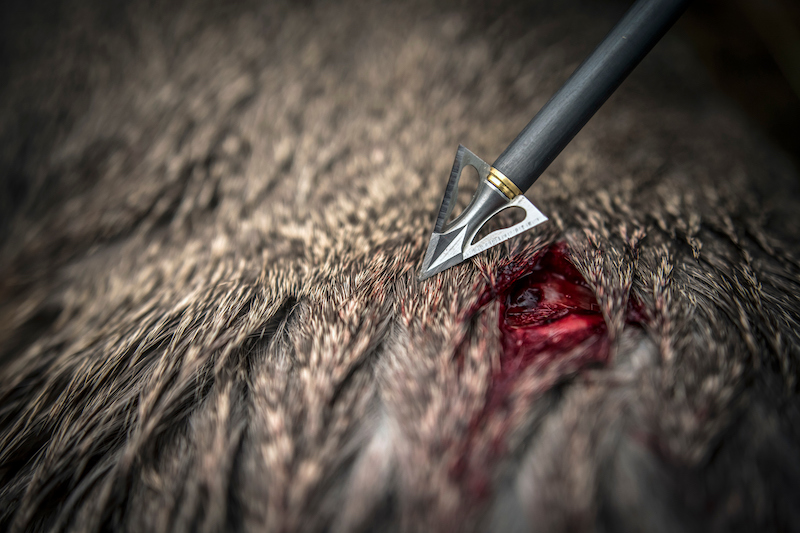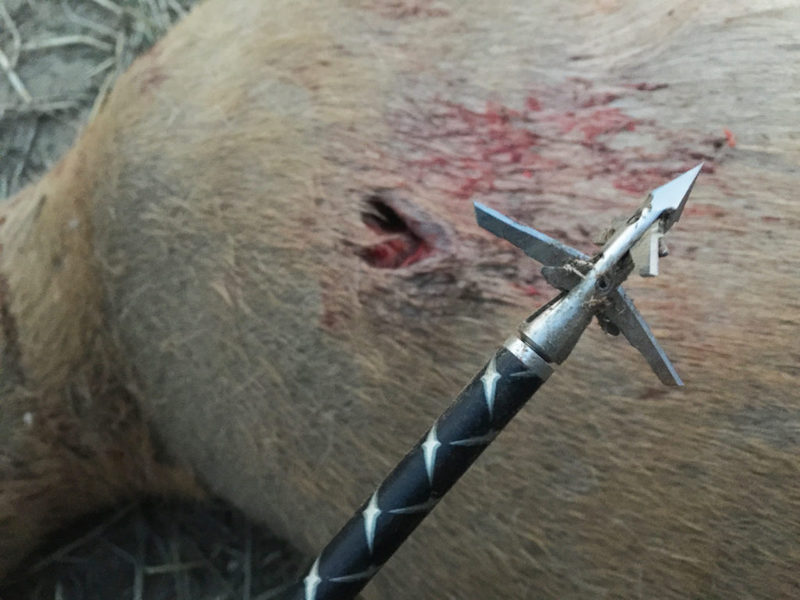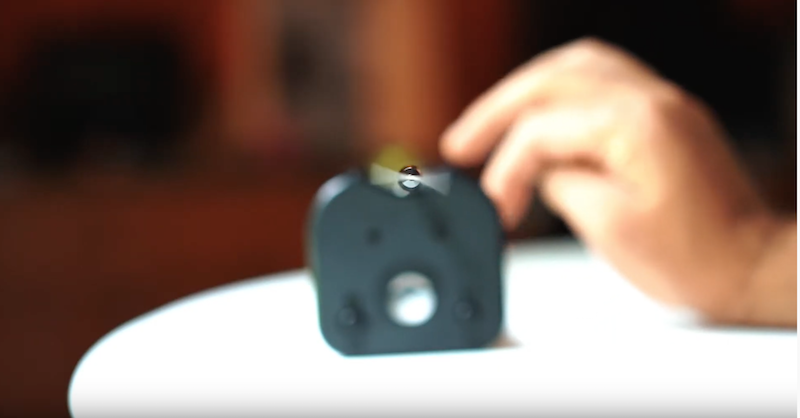When fall arrives, it’s time to trade your practice points for broadheads. Practice tips are great for killing 3-D foam animals but to successfully harvest game, you’ll need something a little sharper.
A broadhead is a point with two or more blades; these blades create the necessary blood loss to harvest animals with a bow. Just as you can choose from different bows, sights and arrows, you have many broadhead options. One of the first decisions you’ll make is choosing between fixed and mechanical broadheads.

Fixed broadheads are a good choice for hunters with a light poundage. Photo Credit: John Hafner
Fixed-blade broadheads are a classic design that can harvest everything from deer to big game like elk and moose. They come in two-, three- and four-blade configurations. The blades do not move, hence the name.
Fixed-blade broadheads penetrate well, so they are an excellent choice when pursuing large game or when hunting with light poundage. These broadheads are also very durable and will penetrate through rib bones much easier than mechanicals.

Mechanical broadheads make a larger wound to make it easier to track the animal. Photo Credit: Deer and Deer Hunting
A mechanical broadhead has closed blades that open upon impact. The folding blades create a low profile, improving arrow flight. Their field point-like accuracy is one of their greatest attributes. Mechanical broadheads also have a large cutting diameter, resulting in a bigger wound channel and a better blood trail.
Mechanical broadheads need extra energy to effectively penetrate an animal, due to the energy used to open the blades and the drag from the larger cutting diameter. A mechanical broadhead is a good choice for archers who pull more than 50 pounds of draw weight.

Use an arrow spinner for the highest accuracy. Photo Credit: ATA
Broadheads add drag to the front of your arrow, which competes with the drag from your fletching. This can amplify small imperfections in arrow flight and cause your broadheads to shoot different from your field points.
What’s the solution to that dilemma? Ask your archery shop professionals to tune your bow. A well-tuned bow should shoot broadheads without issue. But if you are still having problems, you can try a few other fixes.
First, make sure your broadheads are spinning true. Use an arrow spinner to spin each arrow with a broadhead mounted. The goal is for the arrows to produce a tight spin without any wobble. If they wobble, move the broadhead to another arrow and spin it again. If you still can’t get that arrow to spin true, discard the broadhead.
Next, evaluate your fletching. If you are shooting small fletching, you might need to use larger fletching or a four-fletch configuration to stabilize your broadhead.
Finally, make small adjustments to your arrow rest to dial-in broadheads. For example:
Now that your broadheads are flying true, you’re ready to go hunting! Visit a nearby archery shop if you need to buy broadheads, extra blades or have your bow tuned. You can find a shop near you by clicking, here.